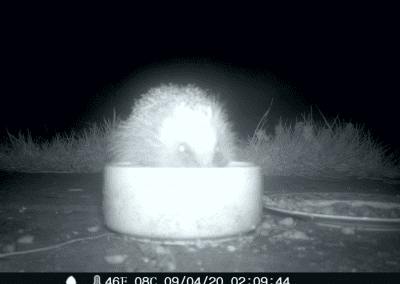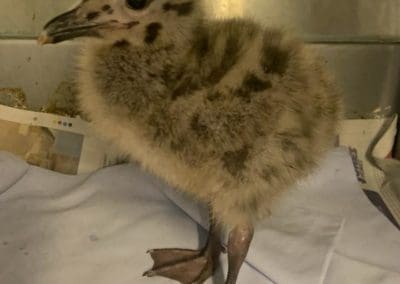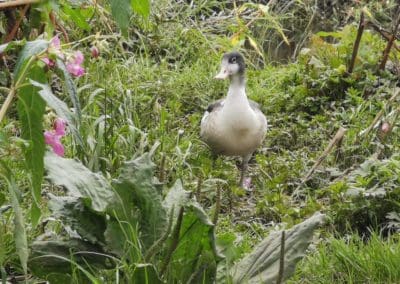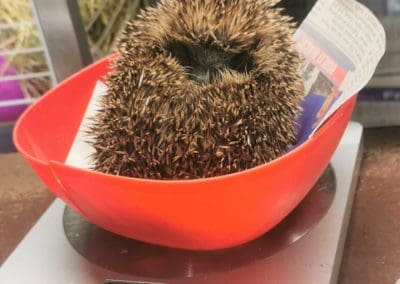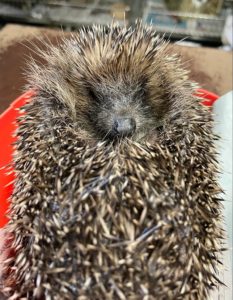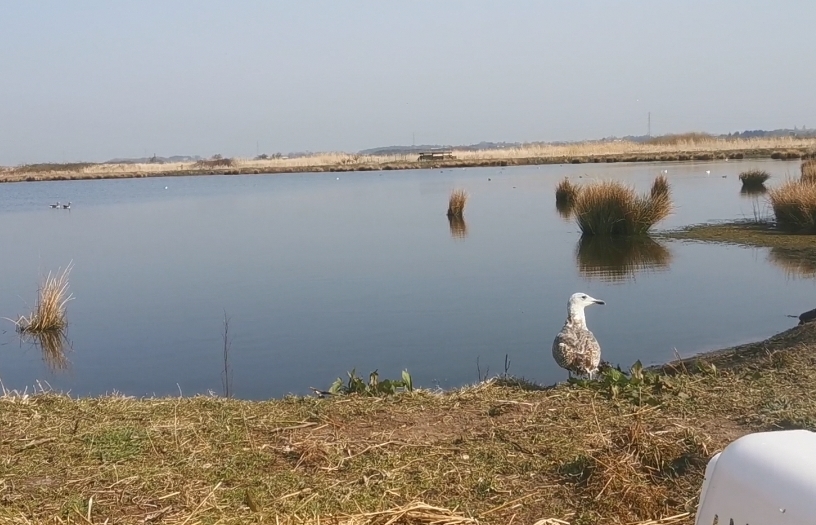
The weather is finally starting to improve – with the rising temperatures we can now start releasing more of the wild animals in our care. This month, we have released 13 wild animals – including hedgehogs, ducks and a gull.
Yesterday, we had a very special moment, as we were able to release a gull that was admitted to us in September last year. When he arrived, it seemed like he was trying to elevate himself using his wings, to keep the weight off his legs. After a positive vet assessment, the team set out trialling hydrotherapy with the gull, to help build up his leg strength.
Six months later, he was raring to get out of the aviary and back into the wild. He was released in an area where there are gulls and within minutes of being released, he was seen stretching his wings – having a great time flying around for the first time in months.
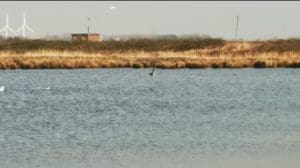
Seeing these moments makes all the hard work and effort worth it, to know that this gull was given his second chance.
Avian Influenza Update
The Avian Influenza restrictions are still in place, meaning that currently we are not admitting any wild or domestic birds onsite. Please keep an eye out on our Facebook page as that is where we will update you on when we are starting to admit.
To find out more about the current Avian Influenza situation across the UK head over to this link https://www.gov.uk/guidance/avian-influenza-bird-flu.
Out and about in March
Daffodils, which are now abundant, symbolize rebirth and new beginnings. This is because they are one of the first perennials to bloom after the winter frost.
The Latin name for the daffodil is Narcissus. It is believed to be named after the son of the river god from Greek mythology. Narcissus was celebrated for his beauty, but he was vain, and so the goddess Nemesis lured him to a pool where he fell in love with his own reflection.
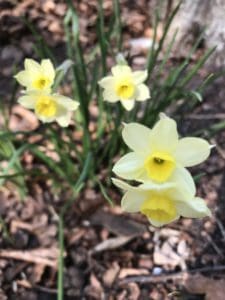
Some sources say that while he was staring at his reflection, nymphs transformed him into a narcissus flower, others think he drowned trying to capture his reflection, and so the flowers growing along the riverbed were named after him.
In England, daffodils are also known as lent lilies or lenten lilies as they typically bloom between Ash Wednesday and Easter.
The flowers are attractive but many are highly bred and are now sterile so of no use to pollinators. If you want to help pollinators you can plant the wild daffodil, Narcissus pseudonarcissus instead, which is pollinated by bumblebees.
As nest building begins robins, sparrows, blackbirds and other garden birds are actively flying back and forth with twigs and other plant debris.
You can help them out by tying bunches of tiny twigs, dried moss, and other stringy vegetable matter near your feeders.
Tiny warblers such as chiffchaffs, are now returning from Africa, having made the perilous journey across Europe. They are difficult to spot, but you might hear them singing in hedgerows and thickets.
Like rooks, grey herons get a head start on the season by building their nests before winter ends. Herons build rather untidy nests in the tops of trees, but considering that these birds are all leg, beak and neck, building anything in a precarious location is admirable.
Herons tend to nest in colonies of anything up to 30 nests in locations that they use year after year. If you think they’re noisy now, wait until April when the chicks are growing and demanding food. The birds produce an extraordinary sound as they clatter their beaks, from a distance it sounds like a steam train chugging along.
Hedgehogs and frogs are now becoming active after hibernation. If you’d like to attract frogs, but don’t have room for a pond, an alternative is to use an old plastic washing up bowl. This can be sunk halfway into the ground in a quiet and shady spot. A large stone inside helps frogs climb in and out. You can also attract amphibians into your garden by leaving some damp places, such as long grass and piles of stones for shelter.
Pike begin breeding at this time of year, the smaller males pursue huge females into shallow weed beds where they thrash around as they spawn. It’s an epic event that’s seldom seen by people.
Pike are endlessly patient. They wait for smaller fish to swim within range, before surging forward with horrifying speed to engulf their victim.
If you are thinking of planting a hedge, hawthorn and holly are good for wildlife as they provide winter berries and also a place for birds to nest in spring.
Did you Know…
That all lagomorphs [rabbits and hares] eat their droppings as soon as they pass. This is known as refection, and it allows the animals to extract extra value from their plant food. Grass is incredibly hard to digest because of its high cellulose content. Unlike cows and other ruminants, lagomorphs cannot chew the cud. Instead, they excrete soft green pellets known as cecotropes, which they eat, giving them the chance to metabolise their food again to acquire some extra nutrients.
Frogs have a 360 visual range. The eyes of a frog are designed and positioned in such a way that at any given moment they can see everything around them, including what is behind them. Frogs also sleep with both of their eyes open.
Spiders build webs around artificial light sources and even climb to the top of lamp posts to catch moths.
Please remember to…
Support wildlife at this time of the year, by putting food and water out for the birds and other wildlife such as hedgehogs. Dried cat or dog biscuits are ideal for hedgehogs, but avoid fish flavours. Please don’t put milk out for hedgehogs as they are lactose intolerant.
Remove detruis to prevent wildlife from injury.
And Finally…
Always seek advice from wildlife staff before bringing an animal to the rescue. If an animal is injured, please take it to a vet as we don’t always have a vet on site.
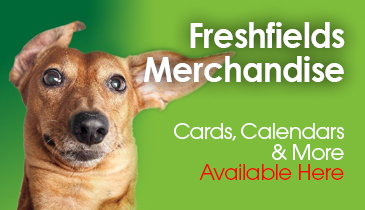
Merchandise


